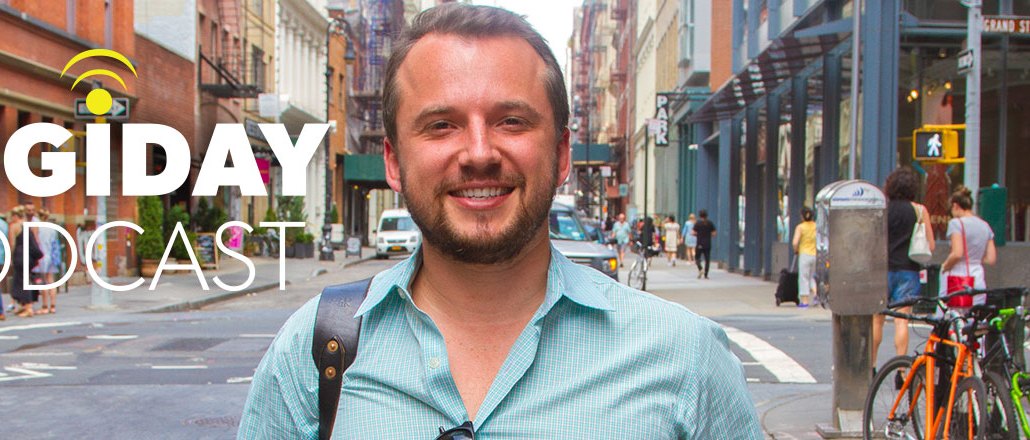
Subscribe: iTunes | Stitcher | RSS
Most publishers today see native advertising as the path to a sustainable online business. While each publisher’s approach to this model differs, T Brand Studio, The New York Times’ brand marketing unit, describes itself as an agency rather than an in-house creative unit.
T Brand pulled in $35 million in revenue in 2015, up from $13 million in 2013. It’s on track to create 100 ad campaigns this year, said Sebastian Tomich, the Times’ svp of advertising and innovation.
Tomich joined Digiday editor-in-chief Brian Morrissey on this week’s Digiday Podcast to discuss the newsroom’s early resistance to native advertising, the future of digital advertising and why T Brand now calls itself an agency. Edited highlights below.
Facing newsroom resistance
Native advertising is regarded by some publishers as a savior, but the Times was initially resistant to embrace the format, lest readers be confused by ads that looked like editorial. Tomich said when the studio first started, then-executive editor Jill Abramson said the Times would never get into native advertising. “To say there wasn’t any resistance would be a complete lie,” he laughed. “The first meeting I walked into, I was incredibly nervous. I was going to be introduced to the newsroom, and one of the editors said, ‘I feel like you’re going to open a sluice of sewage onto this site.’”
Netflix’s ‘OITNB’ campaign was a turning point
In 2014, T Brand’s campaign for Netflix’s “Orange is the New Black” series caught people’s attention. The multimedia campaign that focused on life for women in prison raised the bar for sponsored content and opened journalists’ eyes, said Tomich. “People would say, ‘I didn’t know you could do something so good.’”
Because the Times is a legacy media brand, T Brand differentiates itself more by its creative than its distribution, Tomich said. One way it has done this is by hiring people with strong editorial experience. For example, the editorial head of T Brand Studio, Adam Aston, has written extensively for such publications as BusinessWeek, the Times and The Guardian.
T Brand Studio is an agency
T Brand started as a unit to create ads that would run in the Times proper. It has since branched out to do work for clients that’s independent of the Times. It just created a 60-second video for the Las Vegas Convention Bureau, which may end up on TV, for example. “We looked at our work and asked, why couldn’t we compete as an agency?” Thirty percent of T Brand’s revenue now comes in the form of creative services, he said.
The future is in VR and AR
Tomich said T Brand sees the biggest growth coming from programmatic, video and branded content, which for the first time this year have overtaken traditional display ads. It has also just acquired the experiential agency, Fake Love, to help it explore virtual and augmented reality, he said.
“It’s been a dark year for publishing because there’s so much certainty, but if we can focus our attention on those three lines of business, the view starts to get a lot more optimistic,” he said.
More in Media

Digiday+ Research: Publishers’ growing focus on video doesn’t translate to social platforms
Major publishers have made recent investments in vertical video, but that shift is not carrying over to social media platforms.

Technology x humanity: A conversation with Dayforce’s Amy Capellanti-Wolf
Capellanti-Wolf shared insight on everything from navigating AI adoption and combating burnout to rethinking talent strategies.

How The Arena Group is rewriting its commercial playbook for the zero-click era
The company is testing AI-powered content recommendation models to keep readers moving through its network of sites and, in doing so, bump up revenue per session – its core performance metric.





